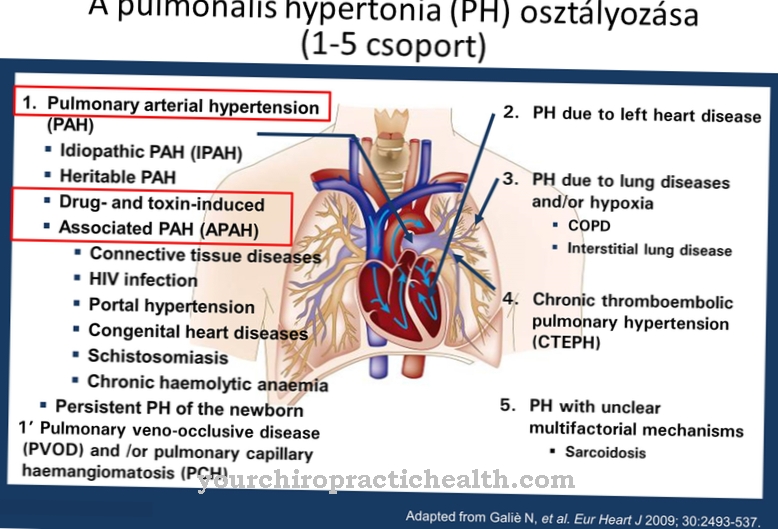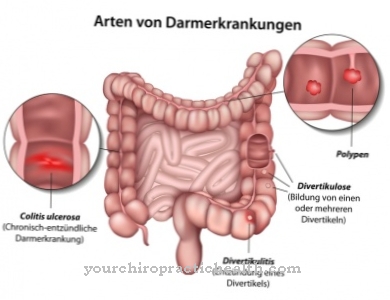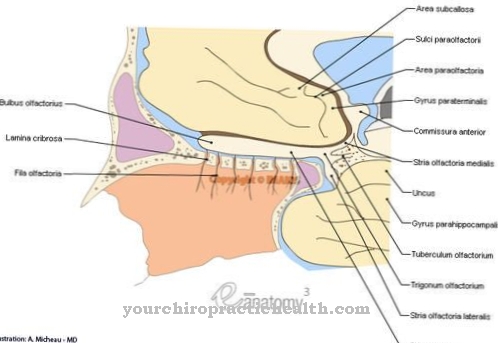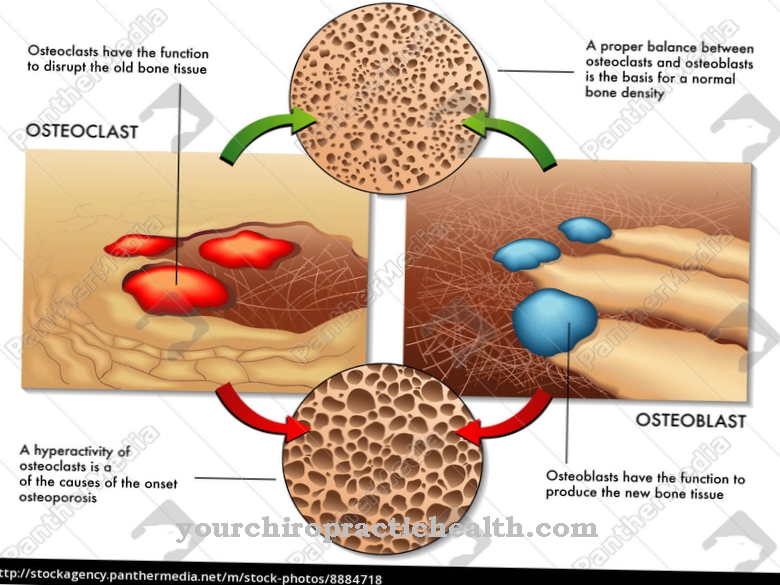The Nasal septum is located median and divides the inside of the nose into a left and right main nasal cavity. Different diseases can impair the function of the nasal septum, with the septal deviation (curvature of the nasal septum) being one of the most common disorders.
What is the nasal septum?
As Nasal septum (Septum nasi or nasal septum) is the median (central), continuous partition between the right and left nasal main cavity (Cavum nasi).
The cartilaginous and bony segments of the nasal septum together with the bony nasal bone (os nasale) forming the upper section of the bridge of the nose (dorsum nasi) form the nasal framework (also known as the nasal pyramid), which gives the outer nose its shape.
Anatomy & structure
The Nasal septum is located in the guide channel of the paired maxilla (upper jaw) and consists of a membrane segment (pars membranacea) and a cartilaginous (cartilago septi nasi or septal cartilage) and a bony part.
The bony area of the nasal septum can be divided into an upper segment, which is assigned to the ethmoid bone, the so-called lamina perpendicularis ossis ethmoidalis, and a lower segment, the ploughshare or vomer. The caudal part of the nasal septum is mobile, which is why it is called the septum mobile nasi.
In addition, a fine vascular network, the so-called Locus Kiesselbachi, is located in the anterior section of the nasal septum, which is responsible for the blood flow to the nasal septum. In the transition between ploughshare and nasal cartilage, the nasal septum is thickened, which can impair nasal breathing, especially in adults.
Functions & tasks
The Nasal septum serves primarily as a median boundary and dividing wall of the nose and, together with the laterally located nasal walls and the turbinates (choncha nasalis), forms the paired main nasal cavities and the curves of the nostrils (nares).
This anatomical structure ensures optimal air circulation and passage of the air flow over the nares into the nasal vestibule, then through the right and left nasal cavity and the rear nostrils (choanae) into the pharynx (pharynx) and finally into the lower airways. In addition, the nasal septum stabilizes the nasal framework or the nasal pyramid and thus prevents the cartilaginous structures from collapsing.
In addition, the olfactory epithelium is located on the upper turbinate and opposite it on the nasal septum, which consists of receptor cells that protrude into the mucosa (mucous membrane) and merge basally into the nerve processes. This component of the nasal septum, which is part of the olfactory system, plays a decisive role in the perception of smells and the functionality of the sense of smell.
Illnesses & ailments
One of the most common impairments of the Nasal septum represents the so-called septum deviation (curvature of the nasal septum), which can be genetic, growth-related or caused by injuries to the nose (trauma).
A more pronounced deviation of the nasal septum is usually associated with impaired nasal breathing and an increased tendency to epistaxis (nosebleeds), sinusitis (inflammation of the paranasal sinuses), tubular catarrh (inflammation of the ear trumpet mucosa), pharyngitis (inflammation of the mucous membrane of the throat) and tonsillitis. If there is pronounced impairment of nasal breathing and / or severe complaints as a result of the septal deviation, surgical straightening of the asymmetrical cartilaginous and bony parts (septoplasty, submucosal septal resection) may be indicated to surgically relocate the deviating septal parts.
In some cases, a parallel operation of the external nose (septorphinoplasty) or repair of the sinuses is indicated. In addition, the superficial vascular network (Locus Kiesselbachi) located in the anterior nasal septum can be injured comparatively quickly by "nasal drilling" or violent blowing of the nose, so that epistaxis can occur here. Injuries as a result of fractures or foreign bodies can also affect the Kiesselbachi locus. In the anterior area of this nasal sheath segment, Rendu-Osler-Weber's disease (hereditary hemorrhagic telangiectasia) can also manifest itself.
As a result of an external injury, cocaine abuse (cocaine abuse), Wegener's disease, syphilis (syphilis) or, in rare cases, a submucosal nasal resection, a septal perforation (hole or tear in the nasal septum) can manifest itself through crust formation, foetor, epstaxis and / or expresses whistling breathing noises and can be surgically closed with a transplant in the case of larger defects. In many cases, however, the cause of a septal perforation cannot be clarified.
A nasal bone fracture can also lead to a septal hematoma, a bleeding into the nasal septum, which can lead to swelling with impairment of nasal breathing and, if untreated or, if the course is infectious, to a septal abscess. If the nasal septum, especially the cartilaginous part, is levered out of its bony guide groove in the upper jaw by a blow, a subluxation is present, which can also be removed by a septoplasty.
You can find your medication here
➔ Medicines for colds and nasal congestion












.jpg)



.jpg)










.jpg)
